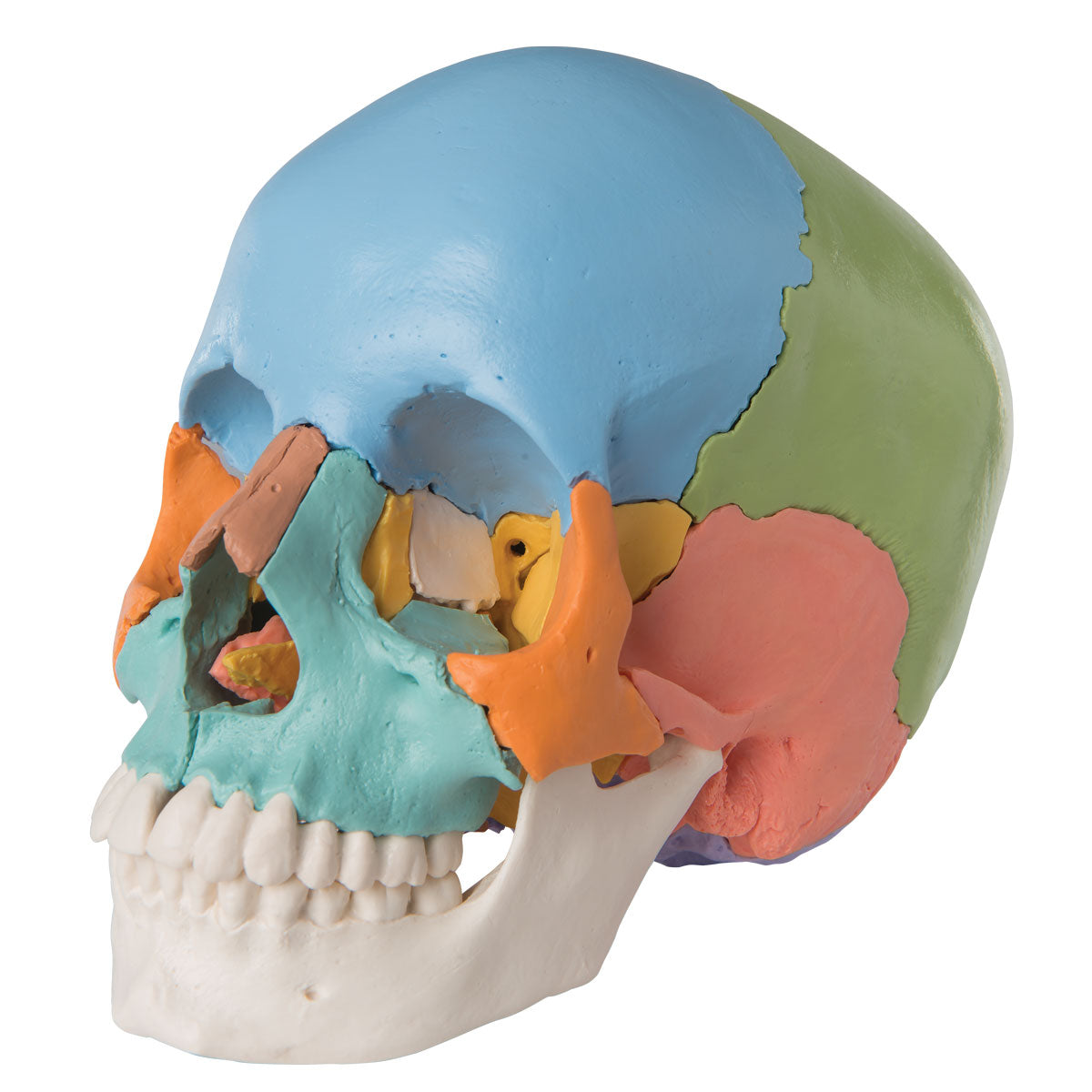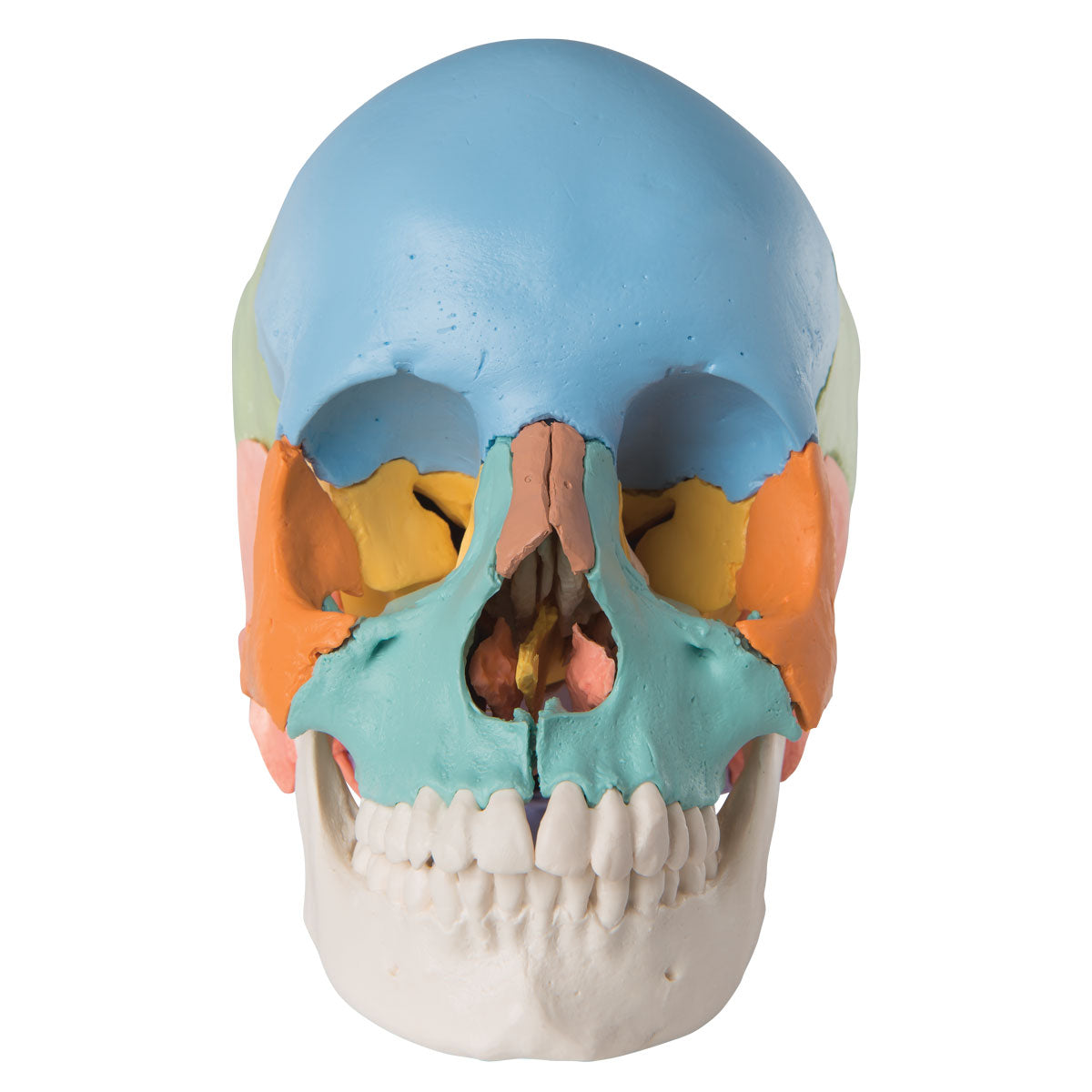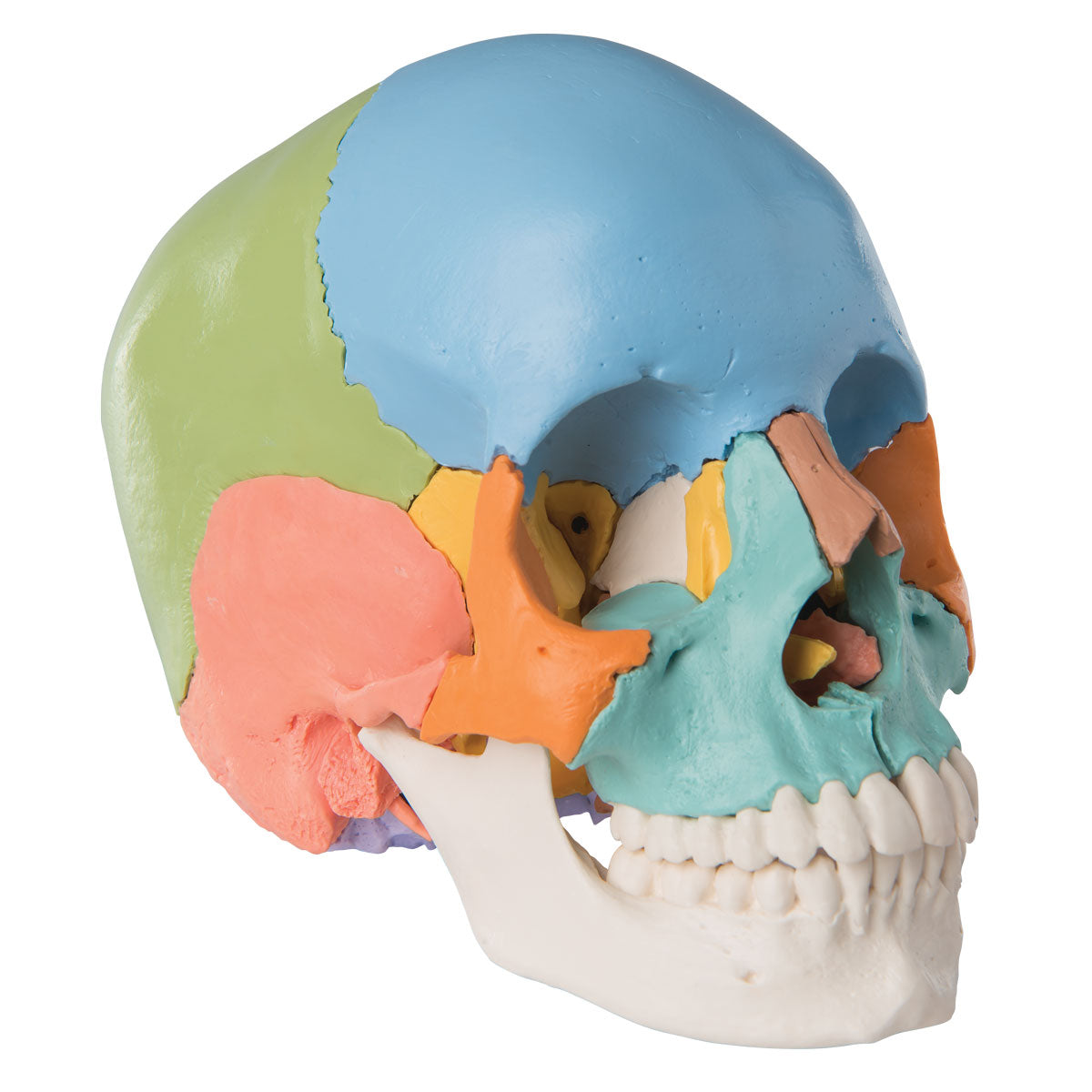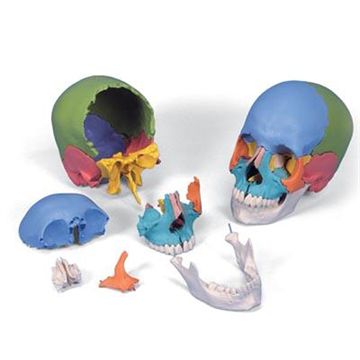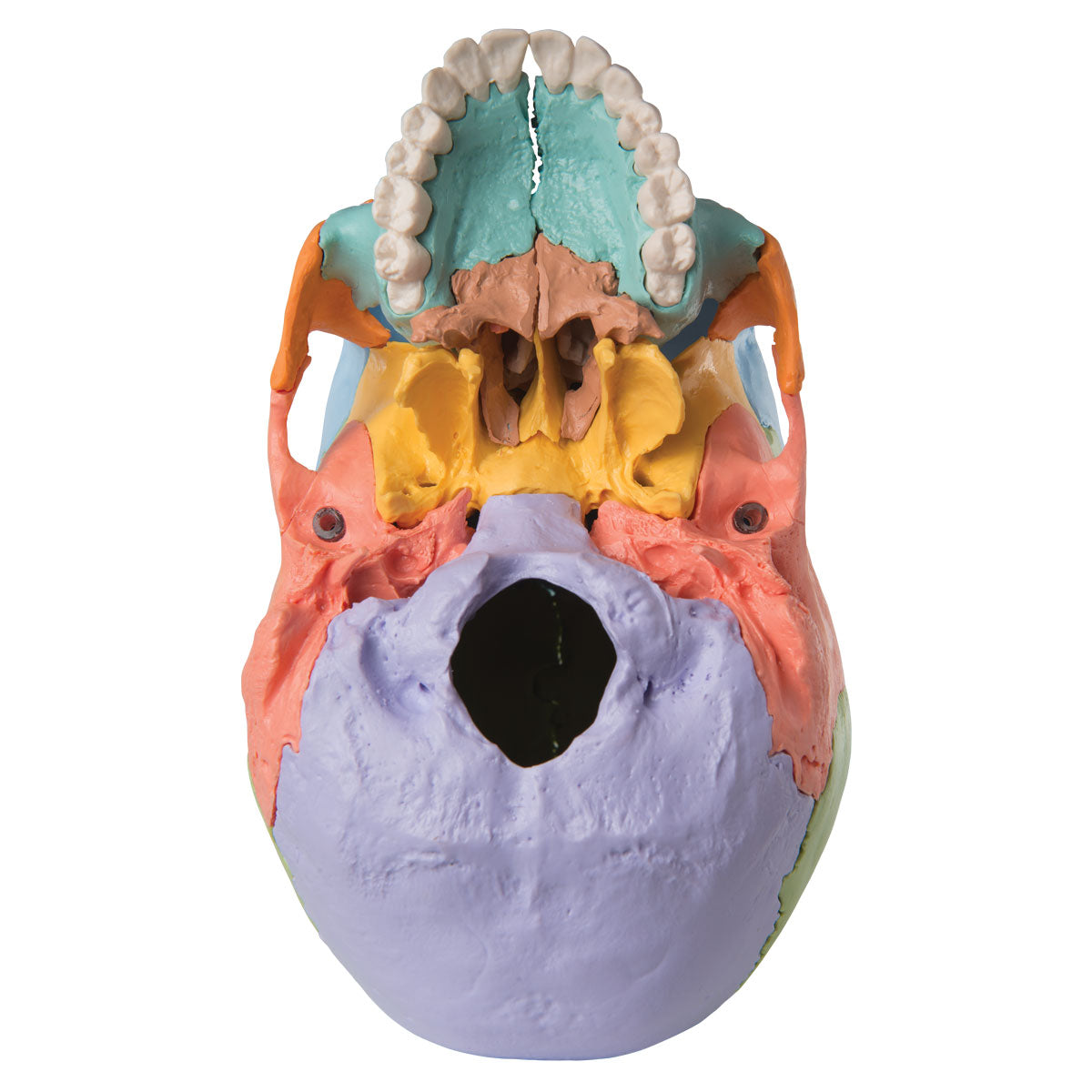SKU:EA1-1023540
Skull model with educationally colored bones. Can be separated into 22 parts
Skull model with educationally colored bones. Can be separated into 22 parts
Out of stock
this product is made to order. To place an order please call or write us.Couldn't load pickup availability
This highly educational skull model comes with different colors on the skull bones, which can also be completely separated. The model is mainly bought by Cranio-Sacral Therapists.
The model is cast in plastic and comes in a size that corresponds to an adult person with a smaller head. The dimensions are 21 x 14 x 16 cm, and the weight is 550 grams. The model can be separated into 22 parts (skull bones). The bones are held together via small nylon pins, and the joints thereby resemble roughened skull sutures.
A detailed overview with the names of the bones is not included with the purchase. On the other hand, you can download and print an overview with e.g. English designations (but not Latin) via the link on the left under the product images (click on the PDF symbol). The skull model is delivered assembled, but in the overview you can also get help to assemble it correctly.
Anatomical features
Anatomical features
Anatomically, the human skull can be divided into 2 parts, and the skull model therefore shows the following:
1) The braincase (neurocranium), which is intended to enclose the brain and the hearing-equilibrium organ
2) The facial skeleton (viscerocranium) which surrounds the nasal cavity and forms the tooth-bearing framework around the oral cavity. The 32 teeth are also included
The braincase consists of 8 bones. There are 4 unpaired (the frontal, sphenoid, sphenoid and occipital bones) and 2 paired (the occipital and temporal bones). All these bones as well as sutures can be identified on the skull model.
The facial skeleton includes 6 paired bones (the maxilla, palatine, cheekbone, nasal bone, lacrimal bone, and lower conchbone) and 3 unpaired bones called the mandible, the ploughshare, and the zygomatic bone (some do not count the zygomatic bone as part of the facial skeleton). All these bones and sutures can also be identified on the skull model.
The hyoid bone is also included in the facial skeleton but cannot be seen on this skull model.
The model's 22 bones are painted with 9 different colours, which are therefore easy to distinguish between. Paired bones are seen in the same color.
The human skull contains many holes and channels containing vessels and nerves. Overall, there are connections between the braincase and the neck, to and from the eye socket, to and from the pterygo-palatine fossa and to and from the nasal cavity.
On this skull model, only some of these holes and canals are visible.
In the development of the model, the bone tissue has not been in focus, and therefore it is not suitable for studying "osseous landmarks" such as nodes and depressions, although some of the most important ones are visible.
Product flexibility
Product flexibility
In terms of movement, it is only relevant to mention the jaw joint. The lower jaw bone ("mandible") is only held in place with magnets. The model's jaw joints are therefore not developed to demonstrate movements. If it is attempted anyway, the mandible must be supported with one hand, which gives the opportunity to "simulate" all imaginable movements.
Clinical features
Clinical features
Clinically, the skull model can be used to understand specific skull deformities such as craniosynostosis.
The model is also ideal for understanding the individual skull bones and their connections, as well as diseases, disorders and disorders in this part of the skeleton.
Share a link to this product






A safe deal
For 19 years I have been at the head of eAnatomi and sold anatomical models and posters to 'almost' everyone who has anything to do with anatomy in Denmark and abroad. When you shop at eAnatomi, you shop with me and I personally guarantee a safe deal.
Christian Birksø
Owner and founder of eAnatomi ApS

